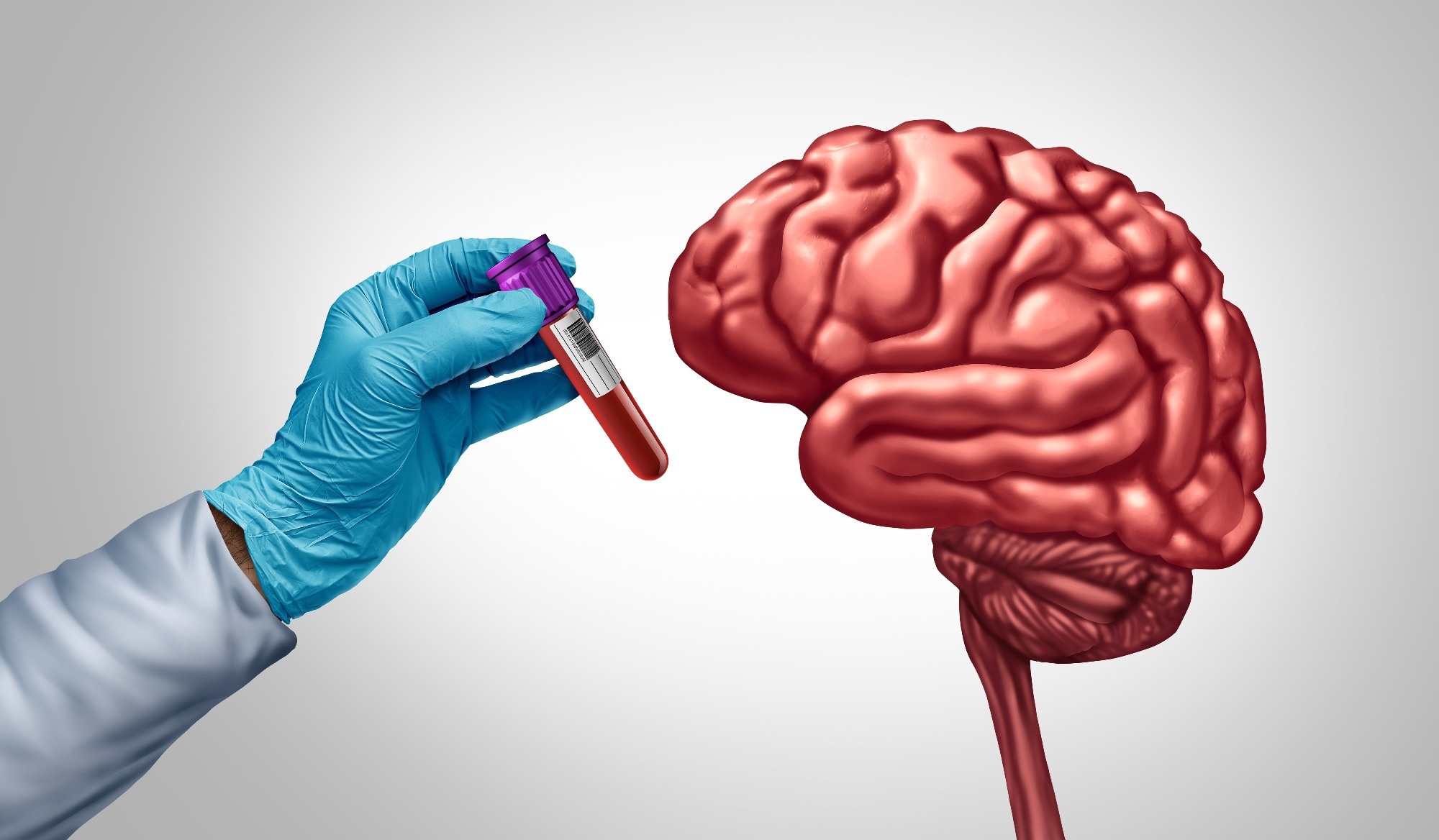In a recent study posted to the Preprints with the Lancet server*, researchers compare two commercially available assays based on plasma phosphorylated tau217 (p-tau217) named ALZpath p-tau217 and Janssen p-tau217+ to diagnose Alzheimer's disease (AD) in 294 patients.
Both assays were associated with robust diagnostic capabilities and a strong association with amyloid-positron emission tomography (amyloid-PET) and tau-PET. These assays also successfully distinguished between AD and other neurodegenerative diseases and, as a result, are recommended for potential clinical use.
 Study: Comparison of Two Plasma P-Tau217 Assays to Detect and Monitor Alzheimer's Pathology. Image Credit: Lightspring / Shutterstock.com
Study: Comparison of Two Plasma P-Tau217 Assays to Detect and Monitor Alzheimer's Pathology. Image Credit: Lightspring / Shutterstock.com

 *Important notice: Preprints with The Lancet publishes preliminary scientific reports that are not peer-reviewed and, therefore, should not be regarded as conclusive, guide clinical practice/health-related behavior, or treated as established information.
*Important notice: Preprints with The Lancet publishes preliminary scientific reports that are not peer-reviewed and, therefore, should not be regarded as conclusive, guide clinical practice/health-related behavior, or treated as established information.
How is AD diagnosed?
The advent of blood biomarkers for AD has made the early diagnosis of this disease possible by detecting the presence of key pathological features such as amyloid-β and tau proteins in the brain, thereby improving patient prognoses. Although cerebrospinal fluid (CSF) biomarkers and PET imaging remain the gold standard for the current diagnosis of AD, p-tau217 has emerged as a promising blood biomarker given its diagnostic performance, correlation with AD pathologies, and comparability with CSF biomarkers.
However, the varying composition of assays targeting p-tau217 necessitates the establishment of their association with core AD biomarkers. This led the current study's researchers to compare two commercially available p-tau217-based assays with varied target specificity from ALZpath and Janssen in patients evaluated with amyloid-PET and tau-PET and clinically assessed by dementia specialists.
About the study
The current study included 294 individuals chosen from the Translational Biomarkers of Aging and Dementia (TRIAD) cohort with PET imaging data, plasma data, and a clinical dementia rating (CDR) score of 0.5 or more. It satisfied the diagnostic criteria of the Alzheimer's Association and the National Institute on Aging.
From the patient's blood samples, plasma p-tau217 levels were measured using the Janssen Simoa and ALZpath assays, both of which were developed by scientists who were blinded to biomarker and clinical data. PET scans were acquired for tau and amyloid-β pathologies, and all data were processed using specific criteria to determine amyloid-positivity and tau-positivity.
The concentrations of plasma p-tau217 were quantified in young adults, cognitively unimpaired (CU) amyloid-negative and amyloid-positive older adults, amyloid-positive and amyloid-negative individuals with mild cognitive impairment (MCI), amyloid-positive individuals with AD dementia, and those with non-AD neurodegenerative diseases.
Non-imaging statistical analyses were performed using R software. These analyses included Spearman rank tests, correlation coefficients, chi-square tests, analysis of variance (ANOVA), biomarker z-scores, fold mean, Bland-Altman comparison, area under the receiver operating characteristic curve (AUROC), and the determination of sensitivity and specificity.
Robust and sensitive p-tau217 assays for diagnosing AD
Both p-tau217 assays showed strong correlations with amyloid-PET and tau-PET, which are established biomarkers of Alzheimer's pathology. A strong correlation was also observed between the two p-tau217 assays, as they were in 94.6% agreement when detecting amyloid-PET positive and biomarker-defined AD patients. Furthermore, these assays correctly identified amyloid-PET positivity in CU and MCI patients.
The clinical severity of the disease, as measured by PET-based Braak staging, was directly proportional to the concentration of p-tau217. Furthermore, patients with non-AD neurodegenerative diseases and those with amyloid-negative MCI had low p-tau217 levels as compared to those with symptomatic AD, thus demonstrating the high specificity of these assays for differentially diagnosing AD pathologies.
When the plasma p-tau217 assays were used to monitor longitudinal disease progression, both assays were strongly associated with yearly changes in the neocortex. The ROC analyses showed that both the p-tau217 assays had high accuracy for identifying AD pathology, with AUC values of 0.94-0.96.
In patients with symptomatic AD, the Janssen assay was associated with a slightly stronger association with neocortical tau-PET. Additional research is needed to improve our understanding of how variability and bias in blood testing could potentially impact p-tau quantification.
As this was a single-center study where better control could be exercised on the handling of blood and CSF samples, the reproducibility of these results should be evaluated in real-world situations and multicenter settings. In the future, the influence of systemic conditions, including chronic kidney disease, on p-tau217 values in the blood needs to be studied, where the p-tau217/tau ratio may serve as a better indicator of AD.
Conclusions
Both p-tau217 assays were found to correlate highly with AD pathologies and showed a high specificity, sensitivity, and differential diagnostic accuracy. The study findings also highlight the use of p-tau217 as a potential biomarker for AD.
Prospective clinical trials supported by predefined thresholds could help assess the clinical utility and accuracy of plasma biomarker-based assays in the future to accelerate AD diagnosis and improve prognosis in patients.

 *Important notice: Preprints with The Lancet publishes preliminary scientific reports that are not peer-reviewed and, therefore, should not be regarded as conclusive, guide clinical practice/health-related behavior, or treated as established information.
*Important notice: Preprints with The Lancet publishes preliminary scientific reports that are not peer-reviewed and, therefore, should not be regarded as conclusive, guide clinical practice/health-related behavior, or treated as established information.
Journal reference:
- Preliminary scientific report.
Therriault, J., Ashton, N. J., Pola, I., et al. (2023). Comparison of Two Plasma P-Tau217 Assays to Detect and Monitor Alzheimer's Pathology. Preprints with The Lancet . doi:10.2139/ssrn.4572850